How To Fix Tuner Or Hdd Unavailable
Summary :
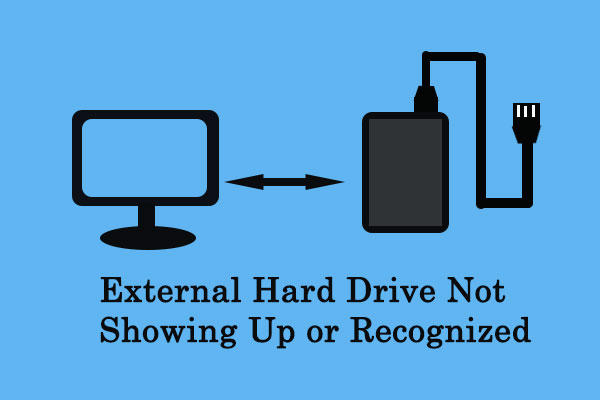
Sometimes, when you connect an external hard drive to your computer, you may find it fails to show up. The external hard drive not showing up problem occurs frequently on Windows PC or Mac, and it could lead to data loss.
There are some useful fixes to the external hard drive not detected on Windows 10. Please read this page offered by MiniTool to know how to access the drive without data loss.
Quick Navigation :
- External Hard Drive Not Showing Up PC
- Method 1: Turn to Different USB Port or Computer
- Method 2: Check & Fix the Drive in Disk Management
- Bonus Tip: How to Recover Files from External Hard Drive Not Detected
- Method 3: Run the Troubleshooter
- Method 4: Fix Device Driver Problems
- Method 5: Reinstall USB Controllers
- Method 6: Enable Legacy USB Support
- Method 7: Install the Latest Windows Updates
- Method 8: Disable USB Selective Suspend Setting
- Method 9: Install the Latest Chipset Drivers for Motherboard
- Method 10: Repair the System Built-in Drivers
- Method 11: Run Anti-virus Program
- How to Fix: External Hard Disk Detected But Not Opening
- Conclusion
- External Hard Drive Not Showing Up FAQ
- User Comments
External Hard Drive Not Showing Up PC
Whether you're plugging in a new hard drive or an old one to your computer, it is possible that you can't see it. Some people even reported that the external hard drive is showing up in devices but not in my computer. This is not a rare issue; it has ever happened to many people and will be happening to more.
What are the possible causes for external hard drive not showing up on computer issue?
- Insufficient power supply
- Lack of drive letter
- Outdated drivers
- File system issues
- Partition problems
- Dead USB port
- …
In the following content, I'll mainly discuss external hard drive not showing up/recognized on Windows 10 in 2 different situations. After that, I'll tell you what do I do if my hard drive is not detected.
What to Do When You Can't See External Hard Drive
Many people have the same experience – they suddenly find an external hard drive is not recognized by the computer; it won't show up in File Explorer (PC not recognizing external hard drive). The first thing to do at this time is checking whether there's an AC power adapter and whether it's plugged in. If not, please plug it into your PC properly.
After that, you should press Windows + E to open the File Explorer and check whether the external drive appears now.
Open Disk Management to Check
If the external or USB hard drive is still not showing up (WD external hard drive or Toshiba hard drive is not showing up in File Explorer), your next step is to open Disk Management and check.
- Open Windows search by pressing Win+S.
- Type disk management.
- Select Create and format hard disk partitions.
- Browse the drives list to look for your external disk.
If you find the external hard disk showing up in Disk Management as unallocated/not initialized/offline, it would be easy to fix the external hard drive not recognized problem (refer to Method 2: Check & Fix the Drive in Disk Management below). This is what people described as external hard disk detected but not showing in My Computer.
Seagate external hard drive not showing up.
I know there are a million posts about this issue, but I haven't come across one that fixed my issue and I really don't want to have to shell out a ton of money recovering my data. Running Windows 10 on an Asus K55N and connecting a Seagate Free Agent Go Flex Desk 2TB external drive. When I connect the drive, it shows in Disk Management and the Safely Remove Hardware icon, but I can't get it to populate in File Explorer. I have not tested on another computer, but I have tested with a different USB cable and was able to connect two other external drives. I did the trial of the Seagate Recovery Suite and was able to see all my files listed, I was just hoping to not have to pay to recover the data (if that's what it boils down to, so be it).- said Corey_23 on Tom's Hardware Forum
Please read Recover Data From Disk Shows As Unknown Without Damaging It to learn how to fix this.
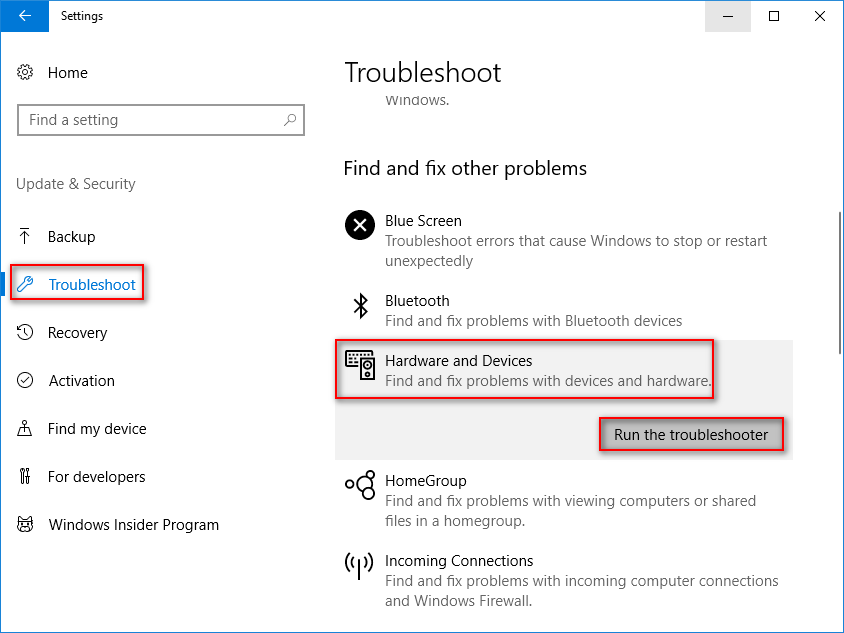
Tip: If Seagate external hard drive not showing up on Windows 10, can you access data in it? Please read Exciting News: Seagate Hard Drive Data Recovery Is Simplified and learn how to finish Seagate external hard drive recovery.
WD external hard drive not recognized Windows 10.
Case:
I have a WD My Passport portable USB hard drive which one of my computers can't detect when plugged in. It doesn't show up in My computer, Device Manager or Disk Management. The only way to get the device recognized is to reboot the computer with it connected, enter BIOS (and do nothing), and reboot again. The drive works fine on my other computer. It has the WD Unlocker Software built in.- posted by Lagnaetti on Windows 10 Forums, Drivers and Hardware
Obviously, Lagnaetti finds that his external hard drive is not being detected by My computer, Device Manager or even Disk Management. He wants to know how to fix the external hard disk not detected issue.
As said before, if the WD external drive doesn't show up on your PC, you should first open Disk Management to have a look. If the WD external disk shows as unallocated/not initialized/offline, you can make it appear easily by formatting, creating a volume, initializing to mbr/gpt, or setting online. However, what if it doesn't appear?
WD External Hard Drive Not Showing Up in Disk Management
If the WD external hard drive still isn't showing up in Windows Disk Management (computer is not detecting/reading or doesn't see the external hard drive), you should consider making the USB/external disk detected by restarting your computer, enabling legacy USB support, and using a different USB port. It's possible that the USB port you use is failed so your computer won't recognize the external hard drive. Please try a USB 2.0 port if you're using USB 3.0 and connect the drive directly to the Windows PC instead if you're using a USB hub.
In fact, there are some cases in which an external hard drive doesn't show up since it has being broken physically. Yet, there are still chances that the unrecognized hard disk can be repaired.
Tip: The WD external hard drive is used widely by people throughout the world. And I advise you to recover data from WD external hard disk which is not detecting. To know "how do I fix my WD external hard drive not showing up on my computer", please read the next part of this article.
In addition, there are also some people who said their PS4 external hard drive is not recognized or Xbox One external hard drive is not detected/not showing up. I suggest that they connect the external hard drive to the computer and check.
Useful Tips On Recovering Data From Xbox One Hard Drive By Yourself!
What if the external hard drive still not showing up? When your external hard drive won't show up on PC, you should first go to check it in Disk Manager. If your computer is still not recognizing external hard drive, you need to try the methods mentioned in this part.
How Do I Get Windows 10 to Recognize My External Hard Drive
External hard drive doesn't show up is a hot topic. Many people said they can't find external hard drive on the computer (computer doesn't find external hard drive). If you also encounter the portable hard drive not showing up (external HDD not showing up) on Windows 10 or other Windows systems, please change a USB port, check in Disk Management, run troubleshooter, update driver, etc.
11 useful solutions you should try:
- Change a USB port.
- Check the drive in Disk Management.
- Run the Troubleshooter.
- Update/uninstall/roll back driver.
- Reinstall USB controllers.
- Enable legacy USB support in BIOS.
- Update system to the latest version.
- Disable USB selective suspend setting.
- Update motherboard chipset drivers.
- Fix the system built-in drivers.
- Kill virus on the computer and external drive.
Is your external drive not showing up? There are many useful workarounds for fixing the external hard drive not being detected in Windows 10 (how to repair hard disk not detected in Windows 7 is basically the same).
Method 1: Turn to Different USB Port or Computer
Change a USB Port
I find my computer doesn't recognize my external hard drive because the USB port is broken. I tried a different USB port and it worked. If the external HD is not showing up when it's connected via a USB 3.0 port, you can also try a USB 2.0 port to detect the drive. Besides, you should try to connect the external hard drive directly to your PC and see whether your computer can detect the USB drive.
The USB drive not showing up Windows 10 may also occur when the power supply of a USB port is not sufficient. In this case, I advise you not to use USB hubs because some of them are not able to provide enough power supply to the external hard drive.
Method 2: Check & Fix the Drive in Disk Management
Sometimes, an external hard drive not showing in my computer (Windows Explorer) could appear in Disk Management. How to open Disk Management:
- Press Windows + X keys.
- Click on Disk Management option from the pop-up menu.
What prevents a drive from showing up:
- External hard drive Unallocated
- External hard drive Not Initialized
- External hard drive Offline
- No drive letter
How to fix the problem in the above 4 cases?
Case 1: Create a New Volume
- Right click on the unallocated space.
- Choose New Simple Volume (or other volume types you need).
- Click on the Next button in the New Simple Volume Wizard Welcome window.
- Specify the volume size and click Next.
- Finish Assign Drive Letter or Path and click Next.
- Finish Format Partition and click Next.
- Click on the Finish button in the New Simple Volume Wizard Completing window.
- Wait for the operation to complete.

Watch how to Create Partition with MiniTool Partition Wizard.
Case 2: Initialize Disk
- Right click on the unknown, Not Initialised disk.
- Choose Initialise Disk from the context menu.
- Choose a partition style from MBR and GPT and click on the OK button to confirm.
- Wait for the operation to complete.
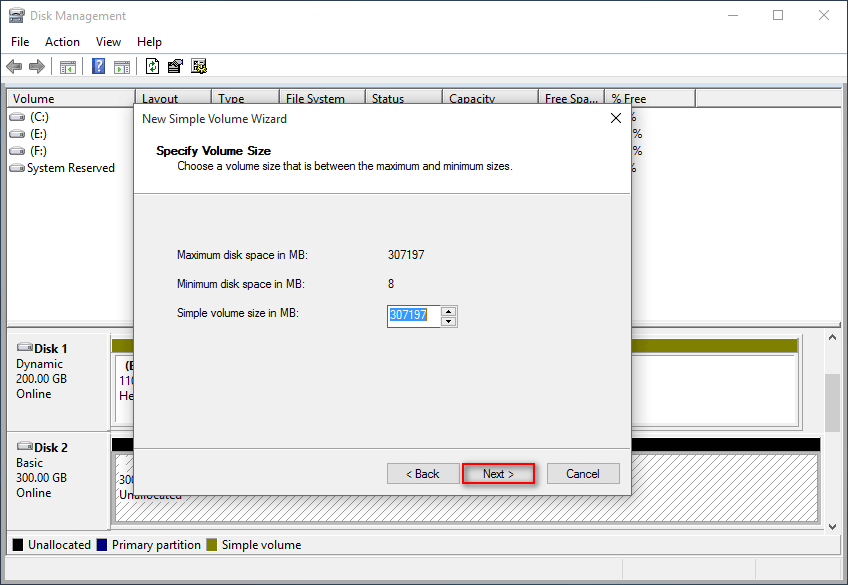
Use MiniTool Partition Wizard to Initialize to MBR Disk or Initialize to GPT Disk.
Case 3: Set Online
- Right click on the disk which shows Offline.
- Choose Online from the pop-up menu.
- Wait a second.

Case 4: Change Drive Letter and Paths
Another way to make the unrecognized or undetectable WD external hard drive (WD Elements) show up on your PC is to change the drive letter.
- Right click on the disk partition which has no drive letter.
- Choose Change Drive Letter and Paths from the context menu.
- Click on the Add button in the pop-up window.
- Assign a drive letter to the partition and click OK to confirm.
- Wait a second. The drive will show up and work again.
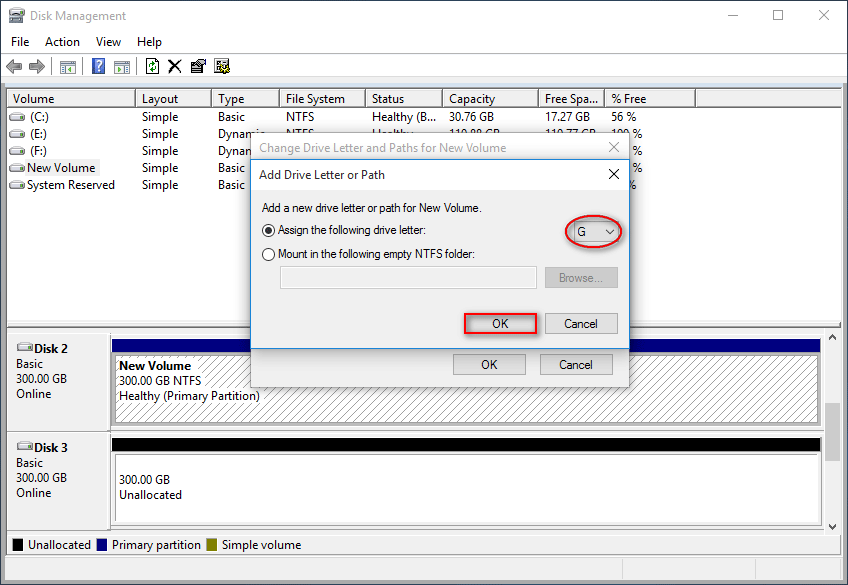
Change Drive Letter more easily with MiniTool Partition Wizard.
Do you want to recover your files from external hard drive not detected? If yes, please read the following tutorial.
Bonus Tip: How to Recover Files from External Hard Drive Not Detected
Step 1: download, install, and launch MiniTool Power Data Recovery. Then, connect your external hard drive to PC.
Free Download
Step 2: shift to the Devices tab at the top and move your cursor to the target external hard drive.

Step 3: click on the Scan button to scan the selected external hard drive.
Step 4: browse the scan results during the scan. Alternatively, you can wait until the end of the scan and then select the files you want to restore.

Step 5: press the Save button and choose another drive with enough free space to store the recovered files.
Step 6: press the OK button to confirm the selection and start external hard drive file recovery.
At last, you can check the recovered files to put an end to the recovery work.
Tip: MiniTool Power Data Recovery can't work for Mac. If you need to recover files on Mac, please use Stellar Data Recovery for Mac instead. If your (external or internal) hard drive not showing up Mac and you want to fix it, please read this page.
Please read this page if your external hard drive seems dead and you need to recover important data from it:
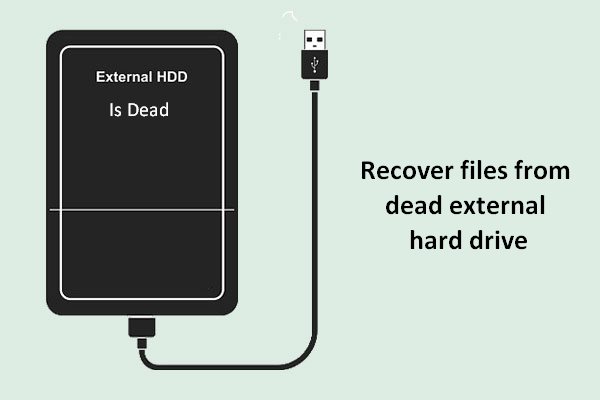
If you are stuck in finding ways to recover files from dead external hard drive efficiently, this passage will be very helpful.
Click to tweet
Method 3: Run the Troubleshooter
For USB device not recognized in Windows, there is a useful tool to help: Hardware and Device Troubleshooter.
How to Run Hardware and Device Troubleshooter
- Open Settings the way you like.
- Choose Update and Security from Windows Settings panel.
- Go to the Troubleshoot tab.
- Scroll down to choose Hardware and Devices from the right pane.
- Click on the Run the Troubleshooter button.
- Wait for the detecting to complete.
- Once the scan is completed, Windows will list the found issues.
- You should choose the issue you want to fix and click Next.
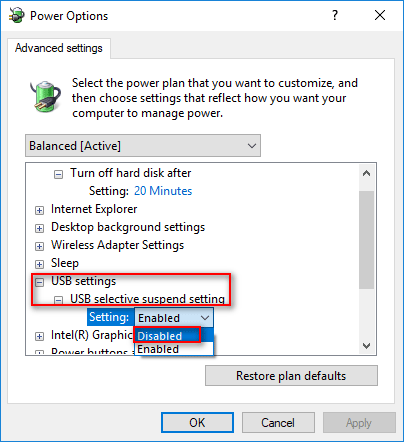
Method 4: Fix Device Driver Problems
If you find your Toshiba external hard drive not showing up on PC (showing as unrecognized), you can open Device Manager to uninstall (or delete) the driver. Then, open My Computer or This PC to check whether the external hard drive shows up now or not. If it doesn't show up, please restart your computer and check again.
How to Update, Uninstall, or Roll Back Driver
- Press Start + X keys on the keyboard.
- Choose Device Manager from the pop-up menu.
- Expand Disk drives option.
- Right click on the problematic drive.
- Choose from Update driver, Uninstall device and Properties.
- Finish the rest steps by looking at system prompt.
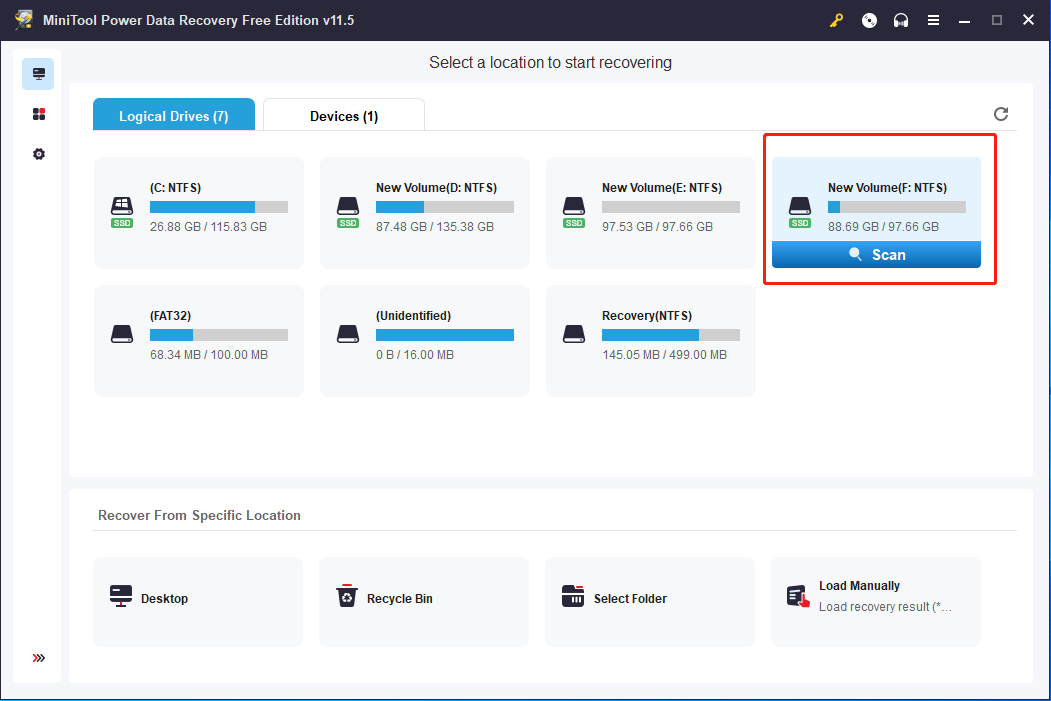
- The Update driver feature helps to fix the USB drive not recognized problem due to a corrupted/outdated device driver.
- The Uninstall device feature is used to uninstall your USB external hard drive with the issue. After that, you should remove the USB device from the computer and then reconnect it after at least 1 minute. This is useful when your USB driver has become unstable or corrupt.
- The Properties feature will help you further diagnose the problem by looking at the error Besides, you can choose to Roll Back Driver by shifting to Driver tab after clicking Properties.
Method 5: Reinstall USB Controllers
Also, you should open Device Manager using the above method or other ways you like. Then, finish the following steps.
How to Uninstall USB Controller
- Find and expand Universal Serial Bus controllers.
- Right click on a device and choose Uninstall device from the context menu.
- Click on the Uninstall button in the pop-up window.
- Repeat step 2 and step 3 to uninstall all devices under Universal Serial Bus controllers.
- Restart your computer and Windows will install the USB controllers automatically.
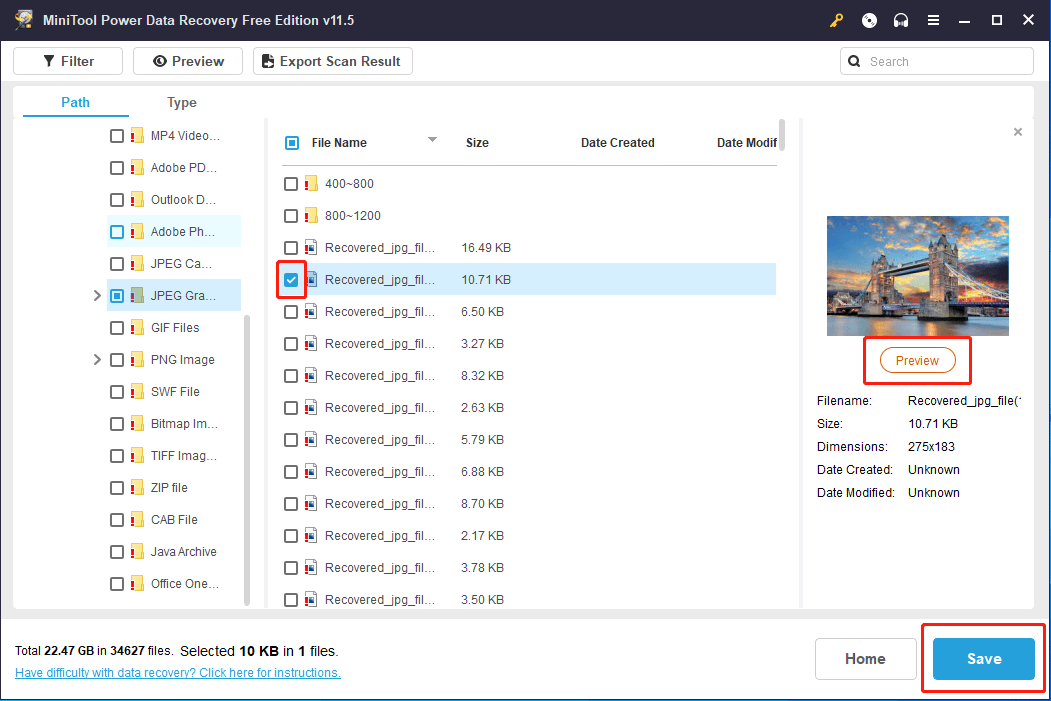
Fix USB Flash Drive Not Recognized & Recover Data – How To Do.
Method 6: Enable Legacy USB Support
Sometimes, you may find your hard disk not detected in BIOS. This may be caused by the disabled Legacy USB Support.
How to Enable USB Support
- Restart your PC.
- Press the corresponding button to enter the BIOS utility.
- Shift to Advanced tab.
- Choose USB Configuration.
- Select Legacy USB Support and set it to be Enabled.
- Exit and save changes.
Note: the process will be a little bit different on different computer motherboards.
It's not an easy task to recover data from a hard disk that is not detected in BIOS especially when the disk is an internal one. The good news is MiniTool Power Data Recovery bootable edition provides an easy way to recover data when the PC won't start. As for how to recover data from undetected internal hard disk step by step, please read:
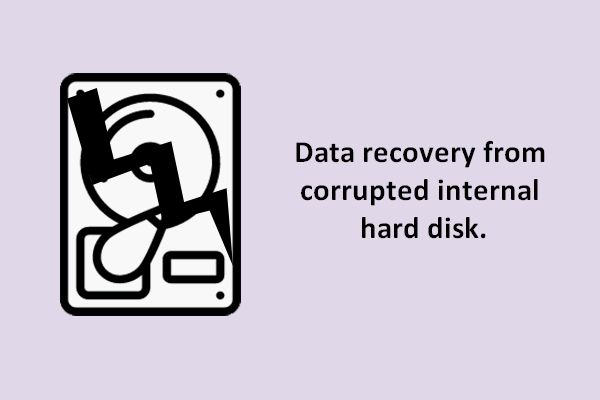
If you're stuck in the data recovery from corrupted internal hard disk, the solutions and software provided here will be of great help.
Method 7: Install the Latest Windows Updates
This method has the same functionality as the Update driver.
How to Check for Updates
- Type Windows Update into the Cortana search box.
- Select Check for updates from the Best match.
- Click on the Check for updates button and wait.
- Finish the rest operations according to prompts.
How To Check For Windows Updates On Windows 10?

If you find some files get lost after Windows Update, please use MiniTool Power Data Recovery to recover data at once.
Method 8: Disable USB Selective Suspend Setting
How to Disable USB Selective Suspend Setting
- Type power plan into the Cortana search box.
- Select Choose a power plan from the search result.
- Click Change plan settings next to the plan used currently.
- Click Change advanced power settings.
- Find USB settings and click on the + button to expand it.
- Click on the + button to expand USB selective suspend setting.
- Change Setting to be Disabled.
- Click on the Apply button to confirm and click on the OK button to close.

Method 9: Install the Latest Chipset Drivers for Motherboard
- Look for the documentation of your computer to find the name of the motherboard manufacturer.
- Visit the website of the manufacturer.
- Find the drivers proper for your motherboard and install it on your computer.
Method 10: Repair the System Built-in Drivers
- Press F8 or another button to enter the safe mode during the boot process; select restart or shut down the computer and power on it later to enter the normal mode (to repair the registry).
- If the problem persists, please enter safe mode again to choose System Restore in order to restore your system to an earlier point when there's no such problem.
- If the problem persists, please use the system disk to repair; open the command prompt, enter SFC / scannow, press Enter and insert the original system disk to repair the system
- If the problem persists, please set the CD-ROM as the first boot device in the BIOS; then, insert the system installation disc and press R key to select repair installation.
- If the problem still persists, I advise you to reinstall your OS.
Method 11: Run Anti-virus Program
If your PC is attacked by virus, unfortunately, any external hard drive connected to this PC will be affected. The virus may cause the external hard drive not showing issue. Please run anti-virus software to kill the virus and get Windows 10 to recognize your external hard drive.
RECOMMENDATION:
To recover data from virus infected external hard drive, you can try using MiniTool Power Data Recovery because of its excellent performance, high security, and simple operations. How to recover files after virus attack:
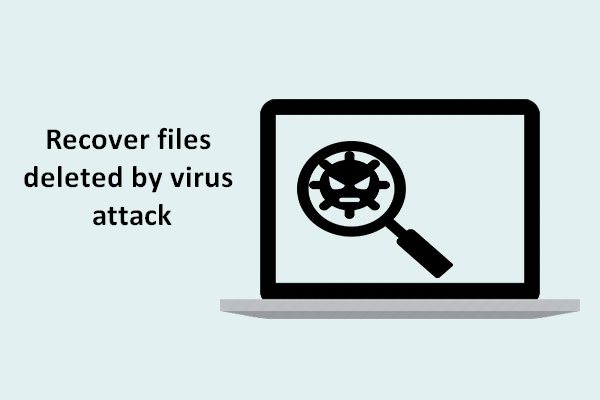
I feel glad to share solutions with users to help them recover files deleted by virus attack quickly and safely.
Xbox Not Detecting External Storage
Some Xbox One users said their console isn't detecting the external storage device they connected. What they should do?
- Remove and reconnect the storage drive to the console.
- Connect to another USB port on the console.
- Power cycle the Xbox console: press the Xbox button on the front side for around 10 seconds -> power on the console to see whether it detects the external storage or not.
Click to tweet
How to Fix: External Hard Disk Detected But Not Opening
There are also some people saying that their external hard drive could be detected by Windows, but can't be opened. The most direct reason is the file system problem.
When the file system of your hard drive is not supported by Windows, you won't be able to access the drive. For instance, Windows gives no support for the ext4 file system (designed for Linux) and the HFS + file system (designed for Mac).
6 Ways To Read Mac-Formatted Drive On Windows: Free & Paid.
After clicking on the drive, you'll be asked to format the disk before you can use it.
- If you choose Format, you should know that all your data saved here will be lost.
- If you choose Cancel, you will see the message: The volume does not contain a recognized file system.

Actually, the most common causes are:
- The file system is damaged.
- The file system is not supported.
- The drive becomes RAW.
- The parameter is incorrect.
- The file or directory is corrupted and unreadable.
- …
2 Methods for Solving External Hard Disk Detected But Not Opening
- Run CHKDSK in Command Prompt.
- Reformat the drive by using MiniTool Partition Wizard.
There are two useful methods for fixing the external hard drive detected but not opening error: run CHKDSK and format the drive.
Method 1: run CHKDSK.
- Type cmd into the Cortana search box on the taskbar (what if Windows 10 taskbar is not working?).
- Right click on Command Prompt from the search result.
- Choose Run as administrator from the context menu.
- Choose Yes in the User Account Control window.
- Type chkdsk /r * (* stands for the drive letter) and press Enter.
- Wait for the stages to complete.

CHKDSK Deletes Your Data? Now Recover Them In Two Ways.
Method 2: format the drive.
- Launch MiniTool Partition Wizard.
- Select the drive with an unsupported file system.
- Right click on the drive and choose Format from the submenu.
- Choose NTFS or FAT32 as the new file system.
- Click on the OK button to confirm.
- Press the Apply button in the main software window.
- Choose Yes in the pop-up window to apply pending changes.
- Wait for operations to complete.
- Click on the OK button in the Successful window.

Click to see Format Partition Tutorial.
Conclusion
Though it may seem strange, it is not a rare problem that the external hard drive is not showing up/recognized/detected. There are many factors that could lead to this problem. When you find that your external hard drive is not showing up in your computer, please use the methods mentioned above to help your computer recognize the hard drive. You can also refer to this post to learn how to recover data from your external hard drive in different ways.
External Hard Drive Not Showing Up FAQ
What do I do if my external hard drive is not detected?
First of all, you should go to open the Disk Management tool on your computer. Then, browse all the drives in the list to check whether the target hard drive is displayed here. If the external hard drive is found, please format it properly to make it show up.
Why is my USB not showing up?
According to study, the USB drive could disappear due to a lot of reason. The root reason for causing that is the driver of USB is tool old, missing, or corrupted somehow. You'd better make use of the Device Manager to check the status of USB driver.
Why is my hard drive not showing up in BIOS?
The reason why a hard drive is not recognized in computer BIOS is not so complex. Once the connection between hard drive and PC is incorrect or the data cable is damaged, you can't find it in BIOS. The SATA cables can fall out of their connection easily.
How do I access my external hard drive?
There are many factors to cause external hard drive disappear from the computer. So the corresponding solutions are diversified. For instance, you can change a USB Port, run the troubleshooter, or update the driver of the external hard drive to try to make it appear.
How To Fix Tuner Or Hdd Unavailable
Source: https://www.minitool.com/data-recovery/external-hard-drive-not-showing-up-recognized.html
Posted by: mauricemarly1993.blogspot.com

0 Response to "How To Fix Tuner Or Hdd Unavailable"
Post a Comment